Text
Great point. Theres nothing wrong with online activism, sharing and hashtagging are all important parts of the campaign. But we need to back it up with action! Protests and petitions, donating and showing up when its important. Love adbusters, what an awesome movement.
The graph at the bottom is really interesting, I assume that the question is targeted at men? If it is, super disappointing results there! Although, i’m not surprised to see the lowest result come from over 55′s. Still so much work to do! #metoo
#metoo Wait, I wrote the hashtag, why has nothing changed?
With an increase of social media use all over the globe, it was only a matter of time before people started using their presence for activism and protesting. People have the ability to spread their anger, frustrations and hate all the way across the world with just the click of a button s (Youmans & York 2012). It’s so easy, why wouldn’t you do it?
As well as using the internet for sharing, there are few who use the internet to find out what is not being said. The term hacktivism refers to groups of activists dedicated to finding out secrets about the government and big corporations (Dery 2010). They do this by hacking into computers and systems that are not available for public viewing and share what they know online. They also try and ‘troll’ the people they hack by posting unwanted content on their accounts. Anonymous, a well known hacktivism group, believes they are doing a public service by exposing the lies and using the reliance on internet news to their own advantage.
As well as using the internet for sharing, there are few who use the internet to find out what is not being said. The term hacktivism refers to groups of activists dedicated to finding out secrets about the government and big corporations (Dery 2010). They do this by hacking into computers and systems that are not available for public viewing and share what they know online. They also try and ‘troll’ the people they hack by posting unwanted content on their accounts. Anonymous, a well known hacktivism group, believes they are doing a public service by exposing the lies and using the reliance on internet news to their own advantage.

Adbusters on the other hand, use their sharing power to try and convince the internet of a certain lifestyle. This lifestyle includes protesting banks, politics, big business, advertising, consumerism and basically any system that stops people from ‘living their dream’ (Adbusters 2018). They organise a series of protests through advertisements, marketing and action. Similar to Anonymous, Adbusters use the very thing they are trying to destroy to promote their cause. It is hard to change what already works so well, and if internet marketing reaches your demographic, there is not really much else you can do.

So what comes of online activism? You’ve all seen the hashtags, share if you’ve been, donate now, the list is endless. Similar to last week, do people think they’re contributing by sharing a post? Yes. Do they think their civic duty is done? Yes. It has become so commonplace in everyday society that people forget how big issues can be. Just because your newsfeed is flooded with the same stories does not mean it is not urgent, and just because you can click a button does not mean you are really helping anybody. No one is obligated to help one another, but don’t pretend that liking content on social media makes you a hero. Backup your actions with protesting, donating money and helping those that really need it.

References:
Adbusters 2018, Manifesto, Adbusters, viewed 6 December 2018, .
Dery, M 2010, Culture jamming: hacking,slashing, and sniping in the empire of signs, Shovelware, viewed 6 December 2018
Youmans, WL & York, JC 2012, ‘Social media and the activist toolkit: user agreements, corporate interests, and the information infrastructure of modern social movements’, Journal of Communication, vol. 62, no. 2, pp. 315-329.
25 notes
·
View notes
Text
Important issue you raised at the end there! What is this inundation of perfect photos flooding out feeds doing to not only body image but self esteem in general! Its a dangerous concept to be able to compare your life to so many others at the swipe of a finger. Especially because as we know, only the best photos get posted! I admire anyone raising children in this new social media world, it would certainly add different challenges. I posted this article in my blog which I think is really interesting! https://www.theodysseyonline.com/the-dangers-of-comparison-in-social-media
Visual Communities & Social Imaging
Throughout the semester, we have learned of the exponential growth of social media platforms. Within this, we have learned of the importance of visuals to social media. All the photographs and videos. At just a click of record button, we can put a photo or video on the internet, where it will be there forever. What we have also learned, particularly in week 9, the high level of anxiety and the difficult ethical and legal issues regarding control that can come over our photos and videos.
YouTube, Snapchat, Facebook, Instagram. I use all of them on a daily basis. Something that has always been drilled into me is about how I’m using them. Luckily for me (or unluckily? I’m not sure), I rarely post on my social media accounts. Not because I choose not to it’s just I’ve never had real interest in doing so. I do however feel inspired by the people who can use social media to express, share and communicate.
The advancement of technology in recent times has seriously contributed to the way in which we are taking these photos and videos. A lot of the times, these photos are barely planned (like they used to be) and within the press of one button or one swipe, we can take a photo. It’s amazing.
“Changes in media technologies have engendered changes in how we capture, remember and communicate personal images of everyday and family life” (Vivienne & Burgess 2013 p. 3).
The camera function on our smartphones allow us to share our expressions and communications all within one snap of ourselves (do we have Kim Kardashian to thank???). One word; selfie.
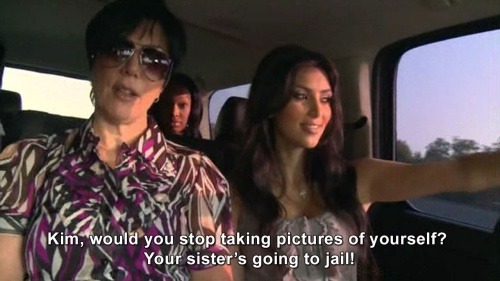
Defined as “a photograph that one has taken of oneself, typically with a smartphone or webcam and uploaded to a social media website” (Oxford English Dictionary 2019). What comes with this advancement in technology comes the filters that we can add to our selfie, making our smiles grow, puppy ears appear and love hearts float above our heads. It’s great. And so entertaining (for some).
What comes with visual communities is obviously the risk of what we can share and WHO we are sharing it with. The use of these images and videos has increased the level of legal and ethical issues which surround privacy. It can leave us vulnerable. It also encourages problems surrounding body image issues as people are using particular Apps, like Photoshop and Facetune, to edit their photos, sending a really powerful message to their followers as people can be posting images that aren’t realistic.
References
Oxford English Dictionary 2013, ‘Word of the Year 2013′, Oxford University Press, viewed 22 January 2019, <https://en.oxforddictionaries.com/word-of-the-year/word-of-the-year-2013>
4 notes
·
View notes
Text
100% agree that Australian politics is falling behind other countries in their use of social media - however its interesting to look at different parties when saying that. Our current government’s ‘target audience’ or voter pool is typically older and less likely to be engaged by social media in the same way more left wing/younger voters could be? Simply a thought, I could very well be wrong. I know Bill Shorten is constantly in my Facebook and Twitter feed! I don’t think we will ever have a politician quite as out there with social media use as Trump, though. He’s in his own league! Interesting that you mention old social media content resurfacing leading to resignations - do we maybe hold out politicians to higher standards in Australia?
Politics and Civic Cultures
We now live in a world driven by new technology and primarily social media, so much so our politicians are now jumping on the social media bandwagon. Overall I’d say there is more engagement from American politicians than Australian ones, this is simply evident in their followings on social media. On Instagram, US President Donald Trump has 10.9 million whereas Australian PM Scott Morisson only has 24,000. There's an ongoing joke that Australians don't know who their prime minister is and this could be a result of their interaction with social media. I know that if all our politicians were more active in online communities like Trump is, they would probably be better recognized.
Online presence, for the most part, can be a great way for politicians to gain followers and voters, however, these social media platforms can bite you back. In 2012 Peter Watson, ALP candidate, was forced to resign as an old homophobic comment of his resurfaced (Jericho 2012).
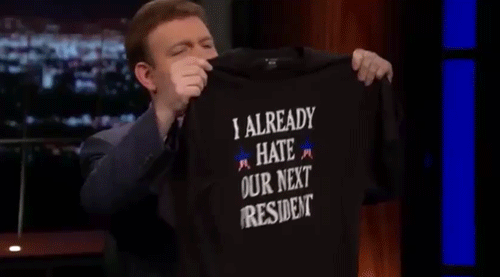
Digital Citizenship, What is it?
Digital citizenship can be defined as a person with the skills and knowledge to effectively use digital technologies to participate in society, communicate with others and create and consume digital content (eSafety 2018). It is simply your engagement with political issues and human rights through the use of social media, it is an expression of opinion. When I think of digital citizenship what I find most relevant to me is the same-sex marriage vote we had in the previous year. I saw heaps of people I knew posting about it and creating funny memes to do with the postal vote. A lot of this content was shared across social media bringing attention to the issue. This encouraged the outcome of the vote as the plebiscite passed and same-sex marriage was finally legalised.

Social media and politics can go well together if taken with care and responsibility. Politicians like to bite back sometimes online which won’t get them far. If we look to the future I believe it is those who are more engaged with their younger voters online that will succeed. The younger voters are the future of the country, therefore, should be most important in addressing. As technology is rapidly advancing and new social media platforms are being introduced the possibilities are really endless. My advice to politicians would be to stay on top of it!
References
Jericho, G 2012, ‘How many votes are there on Twitter?’, in The Rise of the Fifth Estate, Scribe, Victoria, Australia
Esafety Commission Office, 2018, ‘Digital Citizenship’, Australian Government, <https://www.esafety.gov.au/education-resources/classroom-resources/digital-citizenship>
5 notes
·
View notes
Text
Thanks for seeking out a different perspective, Madi! I only have negative exposure to gaming and the idea of it making social interactions easier for introverts or similar is really interesting. I agree to an extent with your take on developers responsibility, young children are to be monitored and controlled in that environment by their parents! But what happens when its adults who are misusing the game for things like cyber bullying? Social media platforms are considered responsible for monitoring that side of things, should game developers be held to the same account?
Week 10: Social gaming
In week 10 we looked at social gaming, this is a topic that I found very interesting as I do not have a lot of exposure to gaming. I find it interesting that there can be both positive and negative interactions within social interaction on a gaming interface. The example used in the presentation for this week was World of Warcraft, I am not familiar with gaming but have heard of this game and have heard it is very violent. It was interesting to then learn that there can be quiet a toxic culture within interactions of players of the game and that measures have been taken to prevent and stop this anti-social behaviour. World of Warcraft has implemented player reporting tools and specific regulations to hold players accountable for their actions and behaviours whilst in the game (De Zwart & Humphreys 2014, p. 80). It was then interesting to find that this had not solved all problems as it is hard to deem what is acceptable behaviour as the line between virtual and real world is blurred within the gaming industry.

Personally, not having any involvement within the gaming industry has made me very curious on this topic and I have asked people about their experiences with gaming and their social interactions. I have a friend who finds gaming therapeutic and has only praise for the interaction he has on the games he plays, as an introvert some social interactions can be very daunting and ‘sparking up’ conversation can be terrifying, but interacting with fellow like-minded gamers comes seamlessly as he knows that he is interacting with similar people, and there is the added bonus of not having to have conversations face-to-face but rather digitally.

I believe that this positive example of social interaction within gaming is shown through the players maturity. The question “What onus is there on the games creators to intervene and manage player behaviour online?” was asked during this teaching week and it got me thinking; I believe that developers are there to create a fun addictive game but, it is at the maturity of the gamers using the game to interact with fellow gamers in a mature fashion. Within young children I believe the interaction should be monitored by their parents, but developers can develop basic rules and outlines for their game, but they are not the law, and I don’t believe they should be reinforcing it through their games when people are misusing it. Does anyone else have this same view or something different? Would love to hear.
Reference:
De Zwart, M 2010, 'Contractual Communities: Effective Governance of Virtual Worlds’, University of New South Wales Law Journal, vol. 33, no. 2, pp. 605-627, EBSCOhost, viewed 16 January 2019, <https://search-informit-com-au.ezproxy.lib.swin.edu.au/fullText;dn=20111239;res=AGISPT>.
5 notes
·
View notes
Text
Ah, the old ‘freedom of speech’ gem hey! I still think for the most part, those who claim freedom of speech allows them to say completely abhorrent things online, generally would never repeat those things in a real life setting! Although Boyd makes a good point about social media platforms allowing more people to SEE bullying as it happens, i’m not sure if that is actually improving the situation or decreasing the occurrences of it! I do like the use of social media to shame those who have done the wrong thing - but i often wonder if they even feel ashamed when they watch it back? If they were willing to do it in the first place, why would the footage of it upset them after the fact?
Trolling
With the proliferation of participation on social media and the ability that the various social platforms give users to speak freely and comment on others, a form of cyber bullying called trolling has also taken fruition. This drama and conflict are described by Danah Boyd in the book It’s complicated: the social lives of networked teens as “performative, interpersonal conflict that takes
place in front of an active, engaged audience, often on social media” (Boyd 2014, p. 138. Boyd talks about the way in which social media gives user the ability to respond and this then gives them a sense of power. I am familiar with this concept as the term “keyboard warrior” which is an urban phrase most likely derived by generation y’s, meaning a person who is abusive over the internet and would not demonstrate the same tone or speech if they were faced with the situation or conflict in real life.

imgflip.com (2019) Keyboard warrior Meme Generator
A BBC News article talks about the harmful effects trolling has on the victims, writers Tom de Castella and Virginia Brown discuss the harmful act, comparing it to road rage and vandalism as an internet equivalent. The article makes the point that there is an argument that the sometimes ferocious comments are about freedom of speech, however, it is more like hate speech and does more harm than good. In it’s most extreme case a person who trolls on the internet with malicious content may be put behind bars. Sean Duffy was jailed for 18 weeks after he left hateful and disrespectful comments on a Facebook page that had been made by parents of a deceased child. (Brown & De Castella 2011).
There is clear downfalls in freedom of speech when it comes in the shape of trolling and causes harm over the internet against individuals, in saying that, there are often positives that social media and freely speaking online can do for the community including shining the light of those who have done the wrong thing so they can be exposed and don’t get away with the act. An example of this is the Youtube video Caught on camera racist Australian abuse girl smash bus window, the video displays 2 men and a woman verbally attacking a French girl on a bus. the French passenger was singing in her native language and because of this was told to “speak english or die” and to “get off the bus or die”. The video was shared virally and enabled the perpetrators to be exposed and shamed for the wrongdoings they carried out on the bus (Checkpoint Media 2012).

Caught on camera racist Australian abuse girl smash bus window YouTube (2012) <http://bit.ly/2j2duNx>
Boyd, D 2014, ‘Bullying: Is the Media Amplifying Meanness and Cruelty?’, in It’s Complicated: The Social Lives of Networked Teens, Yale University Press, New Haven, USA, pp. 128-152.
Brown, V & de Castella, T 2011, ‘Trolling: Who does it and why?’, BBC News, 14 September, viewed 29.01.19, <https://www.bbc.com/news/magazine-14898564>.
1 note
·
View note
Text
Great blog! Crowdsourcing is really a way for all of us to contribute in a positive way during a time of crisis, isn’t it? Knowing you can’t do anything to help, but then having the opportunity to provide information that could be really valuable to the efforts of paramedics (or something similar) is a great way to contribute to the building of community.
And its not always in a negative situation! Its amazing how many times I’ve participated in crowd sourcing without even realising it, friends research surveys, for example!
I found this article which, amoungst other things, refers to the ‘crowd economy’. Super interesting!
https://www.entrepreneur.com/article/307438
Crowdsourcing in times of crisis
In week 8 we discussed the concept of crowdsourcing in times of crisis such as natural disasters, war or terrorist attacks. Technology nowadays allows for quick and effective communication no matter the distance between the sender and receiver, thus during times of crisis is heavily relied on.
Crowdsourcing can be defined as “obtaining work, information or opinions from a large group of people who submit their data via the Internet, social media and smartphone apps. People involved in crowdsourcing sometimes work as paid freelancers, while others perform small tasks on a voluntary basis” (Kenton, W. 2018).
Simply, crowdsourcing aims to bring people together to work towards a common goal whether it be a campaign, project, or a current crisis that’s in need of help and safety. Most people actually participate in crowdsourcing on a day to day basis without even realising. Crowdsourcing includes fundraising which is common across social media platforms. For example, on Facebook, there are plenty of groups or pages that are seeking funds for their organisation or cause. Individuals will also tend to use GoFundMe which crowdsources across the internet in order to earn money for a particular reason or cause.
Crowdsourcing is a tool that’s used most commonly during times of crisis, for example, a terrorist attack. during the 2015 Paris terrorist attack, social media platforms were used to communicate individuals locations and status allowing live updates of the event. Facebook has its own ‘safety check’ feature which allows people to mark themselves as safe and away from danger for their friends and families to see.
“this marked the first time the tool was enabled for violent attacks”(Deepa, 2015)
The Paris attack was the first time this tool was used for a crisis like this and allowed for individuals to keep track of their friends and families movements, without social media this type of crowdsourcing wouldn’t be possible.

References:
Kenton, W. 2018. Crowdsourcing, Investopedia, viewed 22 January 2019 <https://www.investopedia.com/terms/c/crowdsourcing.asp>.
Deepa, S. (2015). The Attacks in Paris: Social-Media Tools Allow For Quick Global Reaction. The Wall Street Journal. [online] Available at: https://search-proquest-com.ezproxy.lib.swin.edu.au/docview/1732921320/fulltext/512869495A4C4400PQ/1?acc ountid=14205 [Accessed 22 Jan. 2019]
3 notes
·
View notes
Text
Week 10 - Social Gaming
Ooooh, this one is a hard one for me. My best friend recently went through a marriage breakdown because of her husband’s inability to break his addiction to online gaming. While I understand that examples like ‘Farmville’ and other similar social games are usually not the cause of anything that dramatic, I still find them problematic in terms of time wasting!! That’s probably ridiculously judgemental of me, but we are all a product of our experiences, and that is mine. These games, while certainly social in terms of the requirement to connect with other people to advance your game position, are ultimately isolating and can seriously damage other relationships in your life (Redmond, 2010).

As discussed by team G, the magic circle theory was proposed by Johan Huizinga in 1955, suggesting a similar concept to the degree of separation required in successful cyber bullying. The magic circle allows real life boundaries or values to be crossed because the game removes the player from the real world. Unfortunately, there is far too much evidence of this boundary crossing translating into everyday life (Ellis, 2014), and really, can this apply to online gaming when it was theorised over 60 years ago?
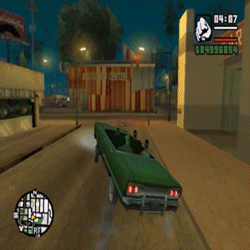
The generally un-monitored condition of the world of online gaming is also troubling to me, while Boyd (2014) claims that the public exposure of cyber bullying on social media could be a helpful or positive thing in terms of monitoring or preventing it, these online games and their communication methods are hidden away from public eyes, fostering the perfect environment for abhorrent behaviour. I’m not just talking about towards other players, games like Grand Theft Auto are solid evidence that online gaming is a troubling foundation for toxic masculinity and associated misogyny (Campbell, 2014). The lack of care or responsibility taken by video game producers to curb this culture is pathetic and disappointing.
I feel like I have had absolutely nothing nice to say about gaming. I googled ‘positive angle on online gaming’ and the results were mostly for childrens educational games – which I understand can be quite useful, although I don’t have kids, so can’t really comment. One thought on that, however – are we training our children from day one that entertainment and education is only available online, and by blocking out the life around you? Ah, and there I go again, all negative. I guess I’m not a fan of online gaming, or video games in general. Each to their own!
References
Redmond, D L 2010, "The effect of video games on family communication and interaction", Graduate Theses and Dissertations.
Calleja, G 2015, ‘Ludic identities and the magic circle’, in V Frissen, S Lammes, M de Lange, J de Mul & J Raessens (eds), Playful Identities: The Ludification of Digital Media Cultures, Amsterdam University Press, pp. 211-224.
Ellis, M 2014, ‘Behavior in real world affected by video games, study claims’, Medical News Today, 11th February, viewed 2nd February 2019, <https://www.medicalnewstoday.com/articles/272431.php>
Boyd, D 2014, 'Bullying: Is the Media Amplifying Meanness and Cruelty?', in It’s Complicated: The Social Lives of Networked Teens, Yale University Press, New Haven, USA, pp. 128-52.
0 notes
Text
Week 9 - Visual communities and social imaging
Reflecting on my profiles, I don’t remember the last time I posted to one of my social media platforms without an image attached. Our words alone have lost meaning, the expectation is for us to keep our online presence visual. Videos that I share on my insta-stories are 100% meant to connect in a relatable way to friends I don’t see often – and I love to see their videos – it’s a much more personal way to communicate in comparison to words or even photos. Its definitely an attempt to create an ‘affinity’, as referred to by Lange (2009).
I always tried to avoid selfies, I was sort of embarrassed about the idea of taking a photo of myself simply so I could post it online and say, hey – here is my face! However, when I was travelling in Europe, the thought of going home with a whole lot of badly taken landmark photos that I could have just googled didn’t appeal to me. I ended up with A LOT of photos like this (please excuse the 30 days of travelling bags under my eyes):

Founder of Snapchat, Evan Speigel, argues that selfies mark the transition from ‘digital media as communication to digital media as self-expression’ (Herrman 2014). I’m not sure about self-expression, but apart from documenting my trip, these photos were essential for communicating with my friends and family back home, not only in terms of my location, but of my wellbeing, for lack of a better word. I am so glad I have these ‘selfie’ like photos, and I’m glad I got over my self-consciousness enough to take them!
I do believe there is a limit to our newfound online egos or confidence. Its important that we keep a perspective around real life and online images, and not allow ourselves to compare the shiny Instagram versions of things to what is right in front of us, day to day. Remember, you may take 10 pictures and post the best one – EVERYONE ELSE is doing that too!
This article is a really interesting examination of social media and the dangers of our highly visual online presence -
https://www.theodysseyonline.com/the-dangers-of-comparison-in-social-media
A friend of mine recently ‘quit’ Instagram. We talked about it afterwards and she said a version of the following;
‘Why do I post pictures on Instagram? To show off an outfit, so show off how cute my son is, to brag about something nice my husband has done, to show people how well I can bake. None of that is healthy for my heart, or my soul. Its full of self-interest and vanity, and that’s not what I want to be about.’
Owch. Thought provoking?
0 notes
Text
Week 8 - Crowdsourcing in times of crisis
Crazy coincidence, but about 30 minutes ago I got a notification that a friend of mine that lives in Townsville has marked herself as ‘safe’ in the Townsville floods. I have also had similar notifications from Facebook during fires and floods that have affected family members, which has been beyond helpful when reception is out and I couldn’t get hold of them.

Before I travel anywhere, I always find myself checking ‘NSW Incident Alerts’ on Facebook, https://www.facebook.com/nswincidents/, after previously being caught behind a couple of accidents, and I’m always amazed at the speed at which the incident is reported by a member of the public and posted with as much detail as possible. The subsequent updates from the accident or occurrence are always prompt as well. This type of page would be completely useless without the ‘crowd’ – all the information comes from a combination of everyday people who are involved or at the scene, law enforcement usually contributes whatever information they can, and the updates are again reported by those who are in the vicinity. This often includes photos which are the most accurate way to portray this type of situation.
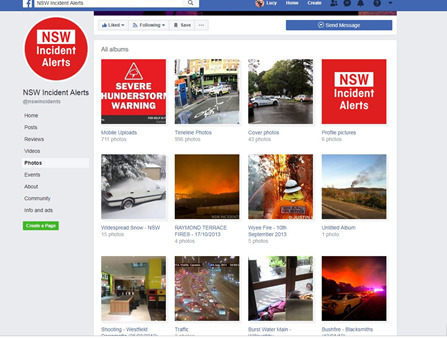
This type of crowd sourced information has moved beyond gossip or even convenience for people like me, to being vital to the speed and accuracy at which emergency services can perform. One of the problems with this way of sourcing information, though, especially in emergencies, is verifying it! Ford (2012) argues that without verification, mi-information can be just as damaging as no information at all. I think, however, that the online community and sense of comradery in times of crisis will mostly bypass the idea of purposely misleading those with the power to help.
Crowdsourcing in times of crisis is definitely not just for the collection of information. Crowdsourcing is collecting together resources for whatever the need is at the time. Another great example of crowdsourcing in times of crisis is, of course, fundraising! I think you would be hard pressed to find an Aussie who hasn’t at some point contributed financially to a disaster fund for a fire, flood or similar act of God. Ultimately, the idea of a ‘crowd’ coming together to avoid the traditional ways of sharing information or resources allows the bypassing of the sometimes slow and biased updates from media outlets and government bodies. Pulling together to help those around us is an Australian value (Chisari, 2015), and although the traditional media has its place, if sharing information is how we can help, we generally want to get involved.
References
Ford, H 2012, 'Crowd Wisdom', Index on Censorship, vol. 41, no. 4, pp. 33-39.
Chisari, M 2015, ‘Testing citizen identities: Australian migrants and the Australian values debate’, Social Identities, Vol. 21, Issue 6, pp. 573-589.
0 notes
Text
Week 7 – Trolling and Social Media Conflict
I’ve thought a lot about the term ‘trolling’ and I really don’t like the word. I feel it belittles what is really happening – ie peer pressure, bullying and harassment, or downright abuse. Just because its online, doesn’t make it worse or better than real world abuse, so why give it a ‘cutesy’ term to differentiate? There is nothing cute about a bully.
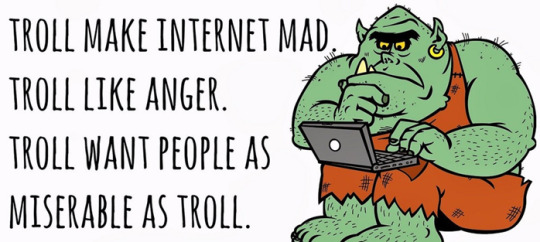
Social media has created a world that feels separate to real life, and therefore allows people to act or behave differently than they would in real life (Boyd, 2014). The degree of separation in online communities is increased and allows normal moral or ethical standards to be lowered. I have recently come to terms with the fact that just like when a child acts out for attention, online bullies are best ignored, which can be really hard, but ultimately dims the fire rather than stoking it. I do, however, love these videos that have emerged of celebrities reading the horrible things that have been said about them online out loud – gives a great perspective when heard from the mouth of successful and confident people, and highlights just how ridiculous it is – these people would absolutely never say these things to the faces of the people they are talking about.
youtube
So, why is this so? Why do people feel so comfortable saying awful and degrading things online when they would never behave that way in real life? And why do online platforms allow it? I use mainly Instagram and Facebook, which both have a ‘report’ function, however I have found the ‘community standards’ reluctant to remove anything I’ve ever reported. Beyond the aforementioned degree of separation associated with cyber bullying, there is also a level of anonymity that is essential for the lack of care regarding the target’s feelings (Rost et al, 2016). There is also argument that bullying behaviour among young people has not changed or increased, but merely become more visible to more people who share in these online spaces (Boyd, 2014).
As someone who was bullied, I can say that yes, perhaps bulling and teenage girls have not ultimately changed. But at least when I went home from school, I had a break. The relentlessness of access to their victims that social media provides to these bullies is perhaps one of the problems, and perhaps one of the easiest ways to protect young people from these issues. Remove the 24/7 access.
References
Boyd, D 2014, 'Bullying: Is the Media Amplifying Meanness and Cruelty?', in It’s Complicated: The Social Lives of Networked Teens, Yale University Press, New Haven, USA, pp. 128-52.
Jimmy Kimmel Live 2013, Celebrities Read Mean Tweets #4, May 10th, viewed 2nd February 2019, <https://www.youtube.com/watch?v=nrjp6e04dZ8>
Rost K, Stahel L & Frey BS 2016, ‘Digital Social Norm Enforcement: Online Firestorms in Social Media’, PLoS ONE, Vol. 11, Issue 6.
0 notes
Text
Week 6 – Activism and Protest
This week was a further exploration of digital citizenship, with more focus on activism and protest, as well as social movements in general. I left my last blog describing my feelings of guilt around my rainbow profile picture, an action that could be described as ‘slacktivism’. As a platform, Facebook is fast becoming the largest gathering place for activists across the world (Bakardjieva, 2009). It has become easy to add your name to a cause without really having to do anything at all to further that cause, ie, changing a profile picture or signing a petition, and that has birthed the term slacktivism. This term, along with clictivism and subactivism are used to describe an action taken online, which could have great intentions, but will make no lasting impact on the world (Bakardjieva, 2009). I guess that word has stuck with me and convicted me in terms of how much importance I place on my online ‘protests’ or how much I am actually contributing to social change by using social media platforms.
It is easy to see the negatives regarding online activism, or call it lacking in purpose, however as previously stated, it would be silly to negate the value of social media as the largest and most accessible meeting place on earth. The ability of the internet to facilitate the virality of a picture, statement or video has supported the movement called ‘culture jamming’ (Dery, 2010) or adbusting – the practice of using/changing existing media to communicate or comment on a political or social issue, eg the below image. By removing the rest of the text, the caption reads ‘She is a thing’ commenting on our patriarchal society and the idea that women are objects to be owned.

In our weekly materials, the Kony 2012 campaign was raised as a viral campaign that participants felt quite disillusioned about in terms of measurable results.

The social media campaign was wildly effective in terms of how quickly it spread, involving millions of people worldwide and raising over 20million after expenses, however the actual result of getting Joseph Kony arrested was far from achieved. I remember entering into serious debate online with very close friends when this campaign was launched, arguing that from my basic research I could tell them that Kony was no longer in Uganda, and that the campaign was seriously fishy. Yes, I agreed that the idea of making Kony famous and raising awareness for his various atrocities was a great cause, but that the campaign had over simplified issues that were far beyond buying a bracelet and putting up posters. This campaign is a great example of the dangers of ‘slacktivism’ – joining a cause without knowing enough about it, clicking ‘share’ without making any real difference to the issue.
References
Bakardjieva, M 2009, 'Subactivism: Lifeworld and Politics in the Age of the Internet', Information Society, vol. 25, no. 2, pp. 91-104.
Collin, P 2015, ‘How to engage youth in making policies that work for us all’, The Conversation, 10th April, viewed 27th January 2019, <https://theconversation.com/how-to-engage-youth-in-making-policies-that-work-for-us-all-39319>
Dery, M 2010, Culture Jamming: Hacking, Slashing, and Sniping in the Empire of Signs, Shovelware, viewed 26 September 2018, <http://markdery.com/?page_id=154>.
Truthloader 2013, Joseph Kony 2012: What happened to Invisible Children? – Truthloader , 5 March, viewed 26 September 2018, <https://www.youtube.com/watch?v=okmswBs4rdg>.
0 notes
Text
Week 5 – Politics and Civic Cultures
Week 5 - Politics and Civic cultures was of particular interest to me because, well, it had to be. I was part of group 2, who explored this topic for Assignment 3 presentation. The two most important things I took away from this topic was the idea of digital citizenship, and examining politicians online, and how they all use social media differently.
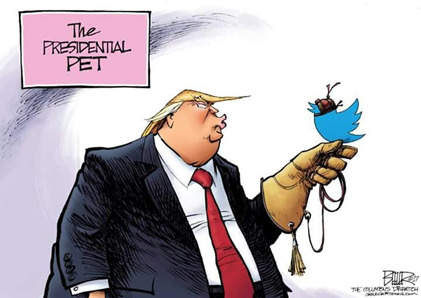
Donald Trump is a great example of when politicians get it super wrong when communicating with followers online. His notorious twitter account, which is separate to the official POTUS account, is frequently the source of ridicule and controversy (Gopnik, 2018). This article about Trumps tweets is an interesting read, suggesting he uses social media, mostly twitter, to say outrageous things in order to distract his followers and the media from other more poignant issues.
https://www.washingtonpost.com/opinions/trumps-tweets-distract-us-from-the-biggest-scandal-of-all/2018/05/08/0212817e-520a-11e8-9c91-7dab596e8252_story.html?noredirect=on&utm_term=.850bd98de8c7
Political social media accounts are almost always run by professional communicators, rather than the politicians themselves (Buncombe, 2018), especially in Australia where our politicians’ online lives are relatively tame compared to the US. Multiple controversial US political figures use social media as a free and easy way to spread messages and ignite followers to action all over the country. This leads to a complete and utter breakdown of common decency towards others online with different political persuasions, taking us to the concept of digital citizenship.
I particularly enjoyed the information I came across in regard to Digital Citizenship. A great definition of digital citizenship is the way in which access to the online world is used to express and debate issues of human rights, politics and democratic issues (Mossburger et al, 2007). As someone who engages in online debate a little more often that I would like to admit, especially when it comes to politics, this concept made me examine my own behaviour and ask myself if I am contributing to my online communities in a positive and ‘good citizen’ type manner. The term ‘civic cultures’ has emerged from this world of online political debates, as contributors form groups to align themselves with a cause, such as a profile picture filter for same sex marriage. I jumped straight on board with that type of thing when it first did the rounds, however on examining these cultures, I almost felt guilty, thinking that adding a rainbow to my profile picture was somehow making a difference. A recent chat with a friend who identifies as bisexual made me realise that while that type of thing was great for showing solidarity and love for those effected by the issue, it should always be backed up by action!

References
Buncombe A 2018, Donald Trump one year one: How Twitter President changed social media and the country's top office, Independent, 17 January, viewed 26 September 2018, <https://www.independent.co.uk/news/world/americas/us-politics/the-twitter-president-how-potus-changed-social-media-and-the-presidency-a8164161.html>
Google Images 2019, ‘The Presidential Pet’ [image], Google Images, viewed 28th January 2019, <https://www.google.com/search?q=trump+tweet+cartoon&rlz=1C1CAFB_enAU661AU670&source=lnms&tbm=isch&sa=X&ved=0ahUKEwiF16matY3gAhVOfH0KHQ6eDrUQ_AUIDigB&biw=1920&bih=969#imgrc=Caw117WfGoCSZM:>
Gopnik, A 2018, ‘Trump’s Tweets Are Ridiculous, but Perilous to Ignore’, The New Yorker, April 17, viewed 28th January 2019, <https://www.newyorker.com/news/daily-comment/trumps-tweets-are-ridiculous-but-perilous-to-ignore>
Mossberger, K, Tolbert, C J, & McNeal, R S 2007, Digital citizenship: The Internet, society, and participation, MIT Press.
Pic Sunday 2018, ‘Australia Marriage Equality Filter for Profile Pic’ [image], picsunday.com, viewed 28th January 2019, <https://www.picsunday.com/p/Australia-Marriage-Equality.html>
2 notes
·
View notes
Text
The internet might just be the most crowded but lonely place on the planet.
Earlier in 2018, the total number of internet users worldwide surpassed 4 billion (Kemp, 2018). Social media has been regarded as a revolution in the way we communicate, contributing largely to the phenomenon of global communities. While it can be lovely to read statistics about relationships being started with the help of social media, and the ability it has to shrink our world and even out some levels of inequality across the planet, is social media actually helping to form healthy and positive relationships, or is it, for some of us, perpetuating the consequence of being overly connected but completely alone?
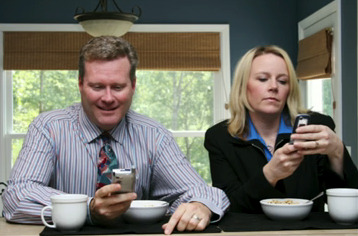
I love this quote from Turkle’s 2012 TED talk –
"We grew up with digital technology and so we see it as all grown up. But it's not, it's early days. There's plenty of time for us to reconsider how we use it, how we build it. I'm not suggesting that we turn away from our devices, just that we develop a more self-aware relationship with them, with each other and with ourselves."
I totally agree with this, I think we can allow far too much of our identity to come from our online presence, the way we use social media and manipulate it to turn our lives into shiny untruths. It becomes part of us, rather than just a powerful tool at our disposal.
Turkle (2012) goes on to talk about how when the formation of online communities began, she had hoped that this technology would be used as a tool for us to learn more about who we are as community members and apply that to living better versions of ourselves in the real world. Unfortunately, I really don’t see that happening. Devices and our online personas are starting to become more important to us than our real life selves, and the people in our real lives that a vying for our attention.
I spent my childhood completely device free, and I am now watching friends carefully monitor their children’s screen time and participation in online communities. I think it’s important that before we reach out to these big worldwide communities, that we learn to communicate and build relationships in real life first. As addictive and seemingly important as my social media time is to me, I was recently really horrified after an iPhone update introduced me to ‘Screentime Monitoring’. Having my phone record how much time I spent looking at my screen each day, and then breaking it down into categories – eep! Let’s just say I was slightly ashamed of myself, especially since I never seem to ‘have enough time’ to work out, or see friends as often as I would like.
I made two promises to myself when that update came out –
1. That each week, when my phone notified me of my ‘screen time report’, that my time on social media would decrease each time
and
2. That when I was spending time with my husband, I would leave my phone at home or in another room.
So far, I’m two from two. Wish me luck!
References
Kemp, S 2018, ‘Digital In 2018: World’s Internet Users Pass The 4 Billion Mark’, We Are Social, 30th January, viewed 10th December 2018, <https://wearesocial.com/uk/blog/2018/01/global-digital-report-2018>
TED-Ed 2013, Connected, but alone?- Sherry Turkle, 19 April, viewed 26 September 2018, <https://www.youtube.com/watch?v=rv0g8TsnA6c>.
1 note
·
View note
Text
Digital Communities in 2018
While I’m writing this blog, I am also simultaneously chatting to a friend on Facebook messenger, and occasionally glancing down to scroll through my Instagram feed on my iPhone. I have just finished work for the day and so am ‘catching up’ on my social media. It’s potentially a negative thing, but very real – I am totally entrenched in the digital communities that I am a part of. I have spent most of my teenage and adult life in the throes of the ‘always-on’ lifestyle, as Boyd (2012) describes, and I honestly don’t find it to be a taxing or negative thing, yet.
Digital communities are the fastest growing of any community type around the world (Kemp, 2018), and have both positive and negative connotations for how we relate to those around us. I was actually shocked to read that if it were a country, Facebook would have the 4th biggest population in the world. As if that isn’t mind blowing enough, lets add in that 216,000 photos are published to Instagram every minute, Snapchat users watch 6 billion videos a day, and it only took 3 years, 2 months and 1 day to go from the first Tweet to the billionth.

Siapera, 2012, was right on the money when he said
'While these [statistics] are very suggestive of the hold social media have on people, what do we actually know about the impact and more broadly about the mediating role of social media?'
To me, this touches on the ability of social media to bring people together. It gives unlikely friends a meeting place, allows us to categorise each other by our ‘likes’ or the pages we choose to follow. For example, I have met many like minded people on the ‘Newcastle Dog Rescue Volunteer’s Group’, a page I was added to after signing up to work for this cause. The people I have connected with in this group are old and young, women and men, from vastly different cultures and backgrounds, but have a united cause. I am not saying these connections are impossible without social media, but its mediating qualities are definitely real and important when it comes to broadening my circle and opening my eyes to the people on these platforms, rather than the platforms themselves.
Social media definitely has the potential to redefine our ‘friends’, but the demonisation of that process is something I find to be a little troubling. If we start to fear or belittle these online connections, we place ourselves in danger of moving backwards as a society (Elliott, 2017). Elliot’s blog on this topic is well worth a read –
https://www.socialwetalk.com/blog/the-demonisation-of-social-media
Granted, we have to be careful about why and with who we connect with on different platforms and acknowledge that these communities are not the beginning and end of our lives; however, I think seeing our digital communities in a positive way is vital for our continued healthy use of social media and online networks.
References
Boyd, D 2012, 'Participating in the always-on lifestyle', in M Mandiberg (ed) The Social Media Reader, NYU Press, pp. 71-76.
Elliott, B 2017, ‘The demonisation of social media’, Social We Talk?, 7th June, viewed 10th December 2018,
Kemp, S 2018, ‘Digital In 2018: World’s Internet Users Pass The 4 Billion Mark’, We Are Social, 30th January, viewed 10th December 2018,
Siapera, E 2012, 'Socialities and Social Media', in Understanding New Media, Sage, London, pp. 191-208.
1 note
·
View note